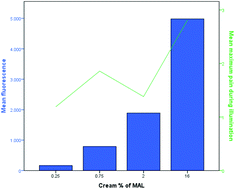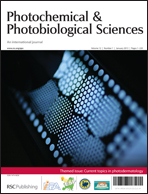The relation between methyl aminolevulinate concentration and inflammation after photodynamic therapy in healthy volunteers†
Abstract
Inflammation and pain are well known adverse-effects in photodynamic therapy (PDT). There is currently a tendency towards introducing lower concentrations of the photosensitizer than used in the standard treatment for various indications. The aim of this study was to investigate whether reduced concentrations of

- This article is part of the themed collection: Current topics in photodermatology

 Please wait while we load your content...
Please wait while we load your content...